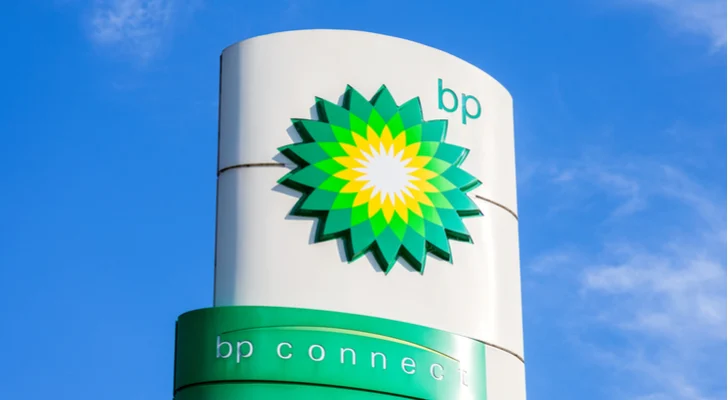Understanding BP Share Price: Trends, Insights, and Future Predictions for Investors

In the ever-fluctuating landscape of global energy markets, BP’s share price stands out as a bellwether for investors keen on exploring opportunities within the oil and gas sector. Understanding BP’s share price trends provides vital insights into not just the company’s performance but also the broader economic indicators shaping the industry.
As we delve into the current market dynamics, historical price movements, and expert predictions, this article will equip you with the tools to navigate potential investment decisions with confidence. Whether you’re a seasoned investor or just starting your financial journey, grasping the nuances of BP’s share price can help you anticipate shifts and make informed choices. Join us as we unpack the intricacies behind BP’s pricing, offering a comprehensive outlook that blends traditional analysis with future forecasts. Your path to investment clarity begins here.
Historical Trends in BP Share Price
BP’s stock (NYSE: BP) has experienced significant volatility over the past decade. From 2020 to 2023, shares fluctuated between $20 and $35, heavily influenced by oil price swings and pandemic-driven demand shocks. In 2024, strategic shifts toward fossil fuels briefly lifted shares to $46.79, but declining oil prices and weak Q3 earnings caused a 13% YTD drop by year-end. As of May 2025, BP trades at $28.59 with a market cap of $74.4 billion, reflecting investor skepticism about its debt-laden balance sheet and leadership transition risks.
The stock’s 2025 performance (-18% YTD) lags behind peers like ExxonMobil (+14%) and Chevron (+7%), underscoring BP’s challenges in balancing energy transition goals with profitability. Long-term holders have endured a -232.55% ROE, though its 6.65% dividend yield remains a rare bright spot.
Factors Influencing BP Share Price
1. Oil Prices: Brent crude’s 2025 slump to $68/barrel (vs. $75 target) directly impacts BP’s upstream profits, contributing to a 49% YoY Q1 profit drop.
2. Debt Burden: Net debt surged to $26.97 billion in Q1 2025, with a 72.3% debt-to-equity ratio limiting financial flexibility.
3. Strategic Pivot: CEO Murray Auchincloss’s $10B/year oil & gas investment plan aims to boost production but risks alienating ESG-focused investors.
4. M&A Speculation: Shell’s potential takeover bid – pending BP’s further price decline – creates short-term volatility but long-term upside potential.
Analyzing BP’s Financial Performance
BP’s Q1 2025 results revealed mixed signals:
Revenue: $469.05 billion, down 1.9% YoY.
Net Income: $687 million (-64% YoY), driven by $821M restructuring costs.
Cash Flow: Operating cash flow of $28.34B supported dividends, but free cash flow turned negative (-$2.7B)。
Key ratios highlight systemic issues:
P/E Ratio: -69.66 signals market doubts about earnings recovery.
ROA: -0.43% reflects inefficient asset utilization.
Impact of Global Oil Prices on BP Share Price
BP’s valuation remains tightly correlated with Brent crude, with a 0.85 beta to oil prices. The 2025 oil glut – fueled by OPEC+ production hikes and weak Chinese demand – has kept prices below BP’s $75/barrel break-even point, squeezing margins. However, geopolitical risks (e.g., Middle East tensions) could trigger price spikes, offering temporary relief.
Recent Developments and News Affecting BP
Strategic Divestments: BP plans to sell $20B in assets by 2027, including Henry Hub pipeline stakes and renewables, to cut debt.
Activist Pressure: Elliott Management’s 5% stake demands faster fossil fuel expansion and cost cuts.
Regulatory Headwinds: UK windfall taxes and EU carbon regulations could cost BP $2B annually.
Shell Takeover Rumors: Shell’s exploration of a BP acquisition (pending sub-$25/share prices) dominates 2025 market chatter.
Expert Insights and Analyst Predictions
Analysts remain divided:
Bull Case: RBC cites takeover potential with a $35 target (22% upside), assuming Shell’s 20% premium bid.
Bear Case: Deutsche Bank warns of “value trap” risks, maintaining $25 target amid debt concerns.
Neutral Outlook: Goldman Sachs emphasizes BP’s 6.65% yield but flags “execution risk” in strategic pivots.
Risks and Opportunities for BP Investors
Risks:
Debt exceeding $26B with rising interest rates.
Prolonged sub-$70 oil prices.
Failed takeover talks triggering selloffs.
Opportunities:
Successful asset sales reducing leverage.
Shell acquisition premium potential.
LNG demand growth (BP controls 20% global capacity)。
Strategies for Investing in BP Shares
1. Dividend Focus: DRIP programs capitalize on 6.65% yield while averaging down.
2. Event-Driven Trading: Options strategies hedge against M&A volatility.
3. Pairs Trade: Short BP/long Shell to bet on acquisition arbitrage.
4. Technical Entry: Buy dips below $25 (200-week MA support)。
Conclusion: Future Outlook for BP Share Price
BP’s 2025 trajectory hinges on oil prices, debt management, and M&A outcomes. While its LNG dominance and Shell’s interest offer upside potential, $26B debt and regulatory pressures create downside risks. Short-term traders should target $25-$35 ranges, while long-term investors await clarity on strategic shifts. With Brent crude likely staying range-bound ($65-$80), BP shares may consolidate near $30 until catalysts like Q2 earnings (July 30) or takeover news emerge.